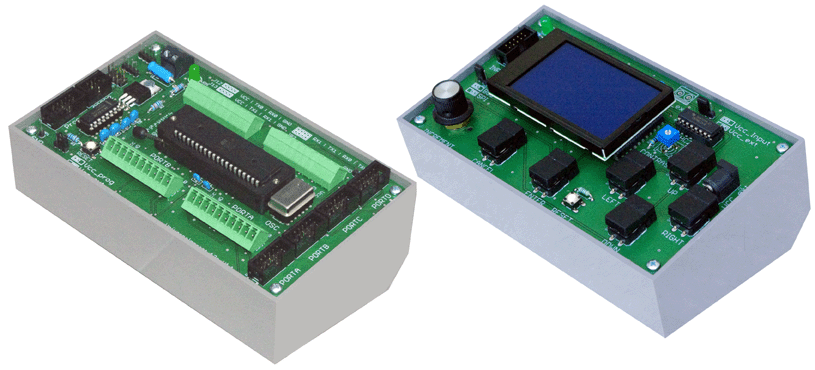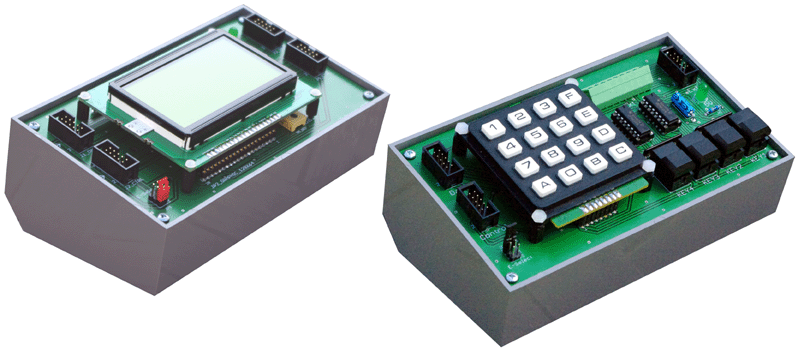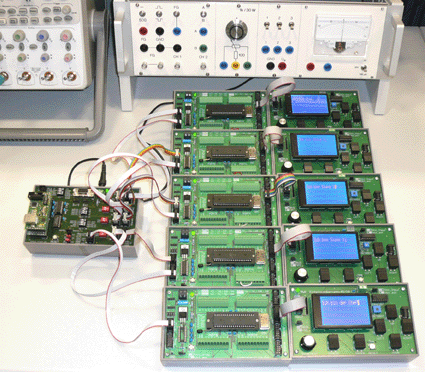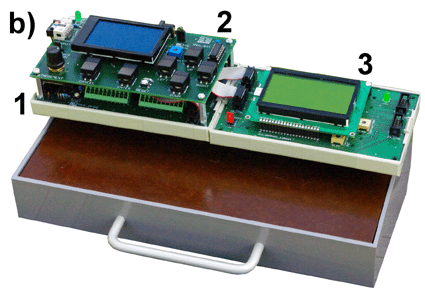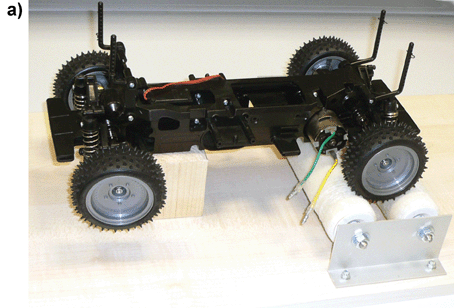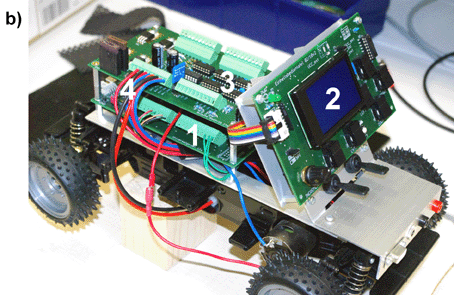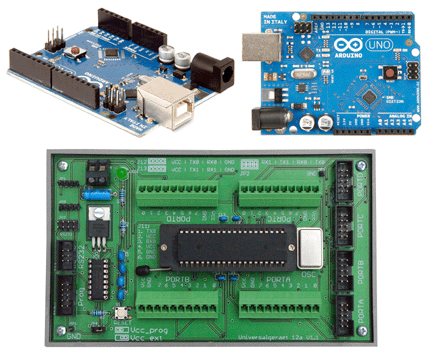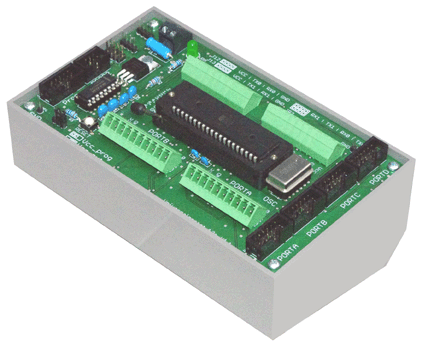 |
|
Projects: Microcontroller Modules for the Ambitious
|
|
|
The general-purpose microcontroller module 12a
The human interface module 02/10
The LCD module 10a
The keypad/input module 10b
I
State-of-the-art microcontrollers are essentially self-contained. Principally, they could be operated when held between two fingers or placed on the table while connected to power supply and peripheral devices via hookup wire (provided the wire is thin enough...). Hence it should not be that difficult to develop own microcontroller modules. By the way, the ultimate solution of a corresponding application problem would be the application-specific board with the microcontroller sitting somewhere in a corner. In this respect the module is only an interim solution. When developing own microcontroller modules, it is a matter of course to seek for opportunities to make improvements, to create something showing unique features. Our unique selling points can be summarized as follows:
To achieve these goals, we allow for a moderate increase in cost and dimensions - we build somewhat larger and use components, which are somewhat more expensive.
An experimental multiprocessor configuration. Five microcontroller modules are connected to a passive hub. One microcontroller is the master. Each of the controllers has its own I/O console, a human interface module 02/10.
Modules mounted on a DIN rail. a) shows the mounting principle. b) is an educational system consisting of a microcontroller module (1), a human interface module (2) stacked above, and an LCD module (3), carrying a graphical LCD display.
An educational model vehicle. a) shows the chassis on a makeshift test bench. b) illustrates, how our modules can be used as OEM building blocks. 1 - general purpose microcontroller module 12a. 2 - human interface module 02/10. 3 - an application-specific board. 4 - power wiring.
|
|
|
|
October 12, 2017 Hardware references updated. What makes the difference (apart from the size)?
Download a competitive analysis.
|




